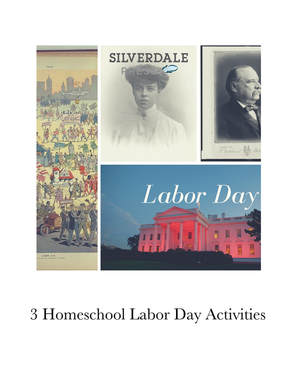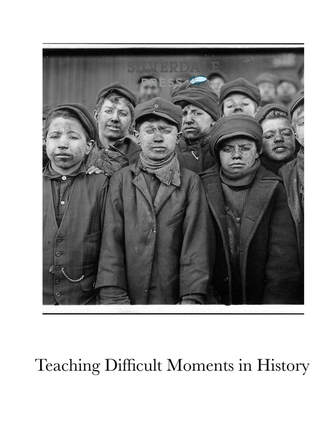 Labor Day—it’s the holiday we associate with back to school sales, cookouts, and a day off of work. But why do we even celebrate Labor Day? There’s such a rich history behind the holiday that most Americans don’t even know. Want to shake up your regular curriculum and inject some fun and learning into your homeschool this Labor Day? Here are three activities that will enrich your entire family. 1. Read a Presidential Address from the Past Presidents give speeches on Labor Day. Their speeches help us understand what was going on with American workers at various moments in history. Plus, they are fun to read aloud together as a family. We at Silverdale Press love to help your homeschool family use primary sources. Presidential addresses are some of the best primary sources around. Our newsletter subscribers received a free document analysis guide on Franklin Roosevelt's 1941 Labor Day speech. Want primary sources like this one emailed right to you? Sign up for our newsletter. 2. Learn Facts about American Workers Today Labor Day honors the American worker. But who are workers? How many teens work? Are unions still important? How many workers are self-employed? What issues face American workers today? Spend some time looking at the charts and graphs about American workers on the Pew Research Center’s Website. (This is great practice for critical and logical thinking). You are guaranteed to learn some fascinating facts! 3. Write to Your Member of Congress At the first official Labor Day parade in Chicago, Representative Lawrence McGann declared, “Let us, each Labor Day, hold a congress and formulate propositions for the amelioration of the people. Send them to your representatives with your earnest, intelligent, endorsement, and the laws will be changed.” Now that you’ve explored facts about American workers, write to your representative and tell him or her what labor laws need to be changed. From retirement savings to the minimum wage, teen labor to workplace safety, there are many important issues facing American workers. So, are you ready to take a break from your regular curriculum or open your kids' eyes to a slice of history they do not know? Try our White House Holidays: Labor Day Unit Study. You will learn so much about the history of American labor, through the unique lens of the presidency!
1 Comment
 Not every moment in human history is sunshine and progress. While there is much to celebrate about our story, human history is, well, human. Human nature is flawed. The result of imperfect people moving through time is this: there are dark spots in the historical record. Slavery, oppression, and war are just a few common threads woven through history. Though we may want to hide difficult historical moments from our children, there is much to be gained from teaching about them. Difficult Moments in History... Are Eye-Opening “Wow, Mom, I had no idea…” Difficult moments in history are eye-opening. Why are they eye-opening? Let’s say you just learned about William Wilberforce and the movement to abolish the slave trade in Britain. As part of that, you learned about the horrid conditions of slave ships during the middle passage. “So much misery condensed in so little room, is more than the human imagination had ever before conceived,” Wilberforce told the House of Commons in 1789. Why is this valuable to your student’s learning? It opens their eyes to what humans are capable of. It opens their eyes the importance of leadership and wise decisions. It helps them understand where we have been and who we are today. Create Empathy Learning about difficult moments in history creates empathy. Why? Human suffering accompanies any difficult moment in history. Empathy is the ability to understand another person’s thoughts and feelings from their point of view, rather than from your own. Empathetic people can imagine themselves in the place of people in history and understand what they are thinking and feeling. How would your student feel living in the Jim Crow South? How would your student feel as a front-line soldier launching the D-Day attack on the beaches of Normandy? Exposing students to hardship and suffering creates empathy for our fellow human beings. Foster Gratitude Learning about difficult moments in history makes children grateful for the times in which they live. Our world today is by no means perfect. But there are freedoms and conditions that children of today enjoy that children of yesteryear did not. How would your teen girl think about her right to vote if she knew that suffragettes were jailed and force-fed so she could have that right? She probably would be grateful for the sacrifice others made on her behalf and would think twice about taking that right for granted. The History of Child Labor One such difficult moment in history is child labor. While child labor is still practiced today, especially in Africa and Asia, it was practiced in the U.S. in the not-so-distant past. In fact, it was not until 1938 that child labor was outlawed in the U.S. Before then, children worked long hours in homes and factories. Conditions were poor, they were paid very little, and they went to school only irregularly. In just a couple of weeks, Americans will come together to celebrate Labor Day. More than just a day off of work and school, this holiday gives people a chance to reflect on the past and future of the American worker, and the history of laborers in the U.S. and across the globe is a difficult one. But it's also a great opportunity to create empathy, foster gratitude, and open your child's eyes. Interested in learning more? Check out our homeschool Labor Day Unit Study from our White House holidays series! |
Silverdale PressCheck out our About Page to learn more about us! Categories |

 RSS Feed
RSS Feed